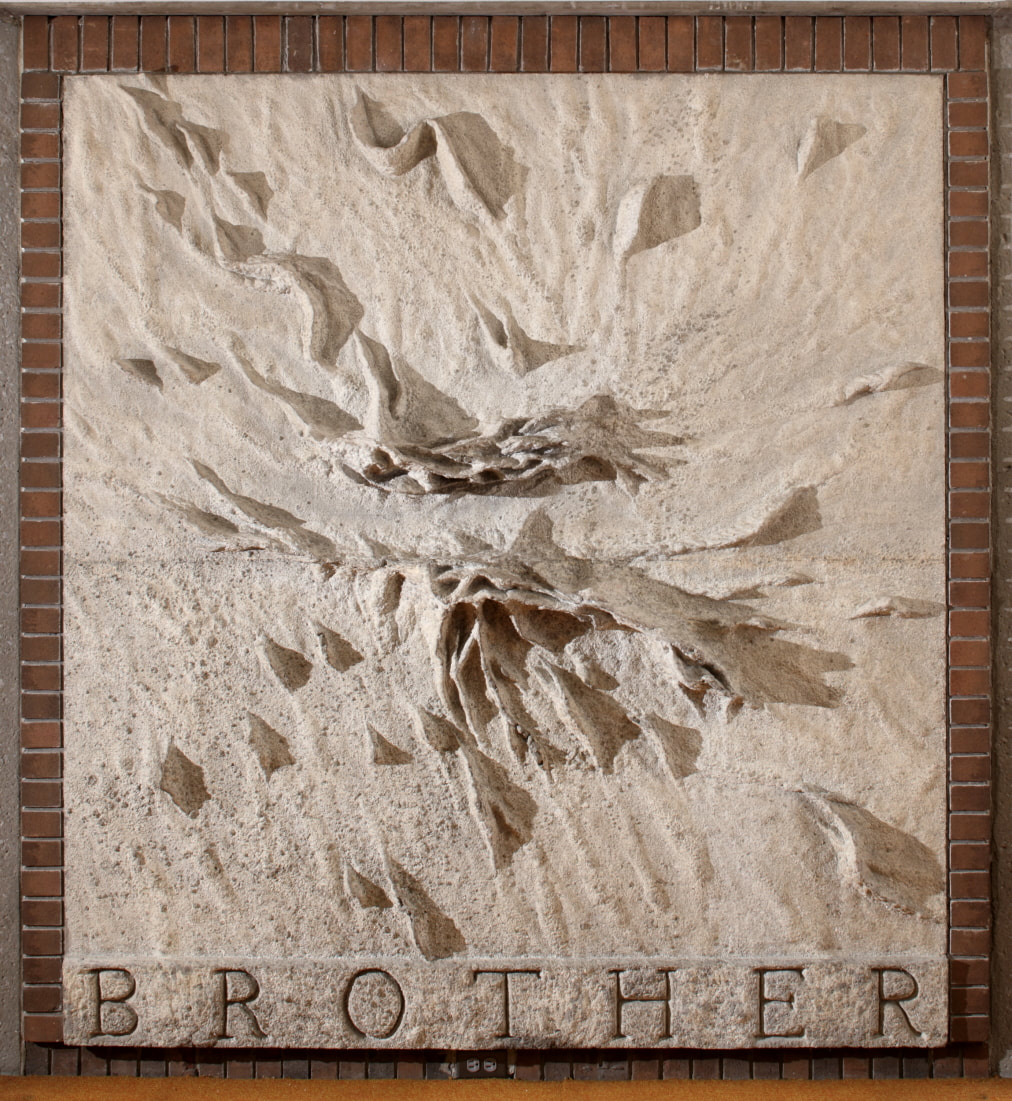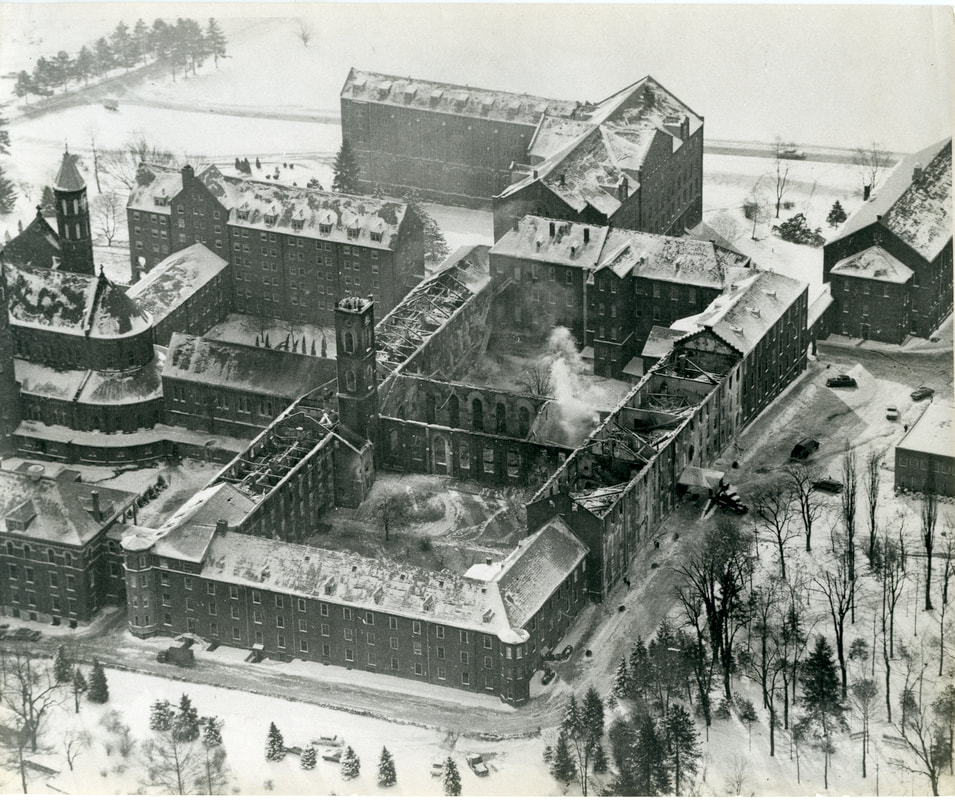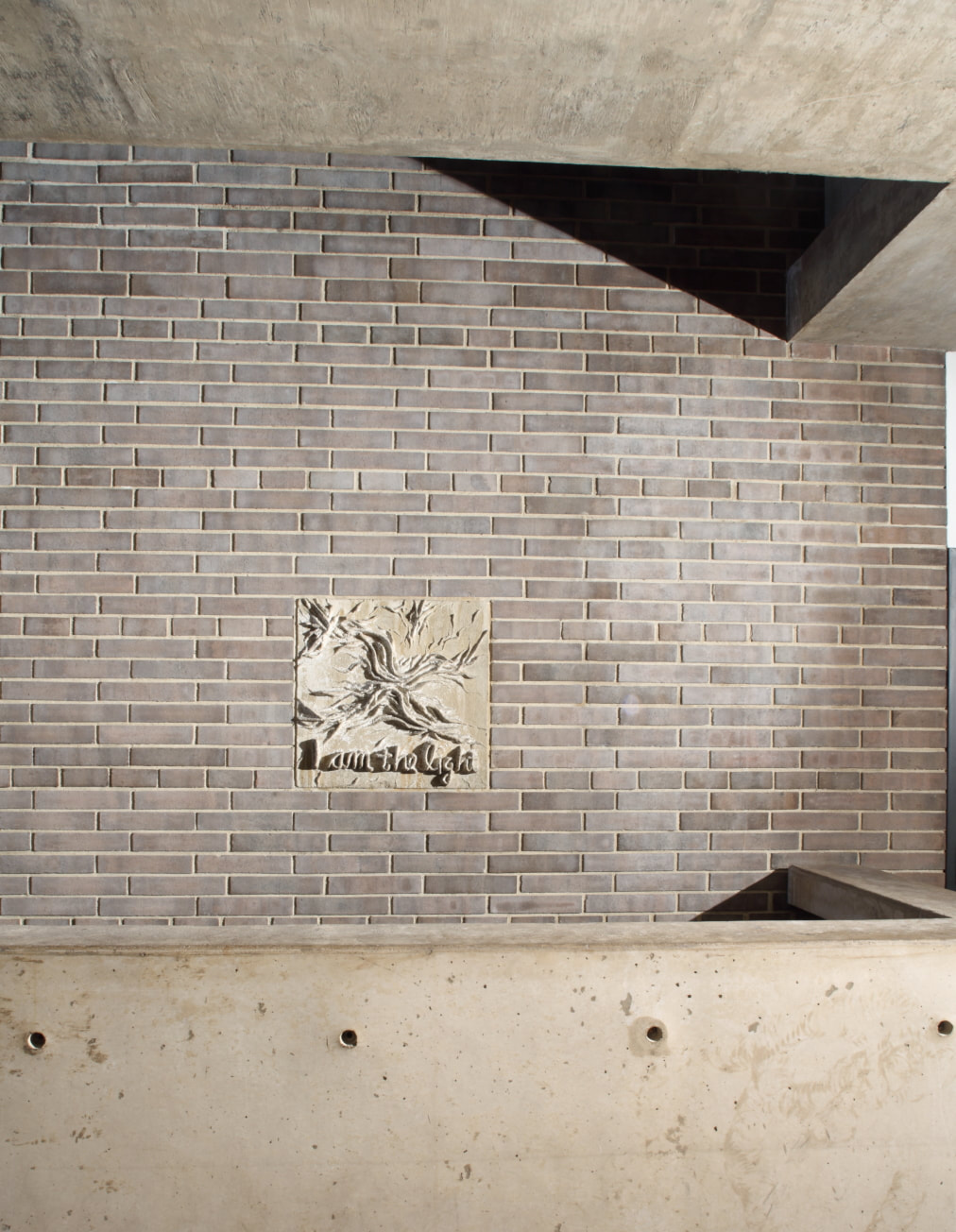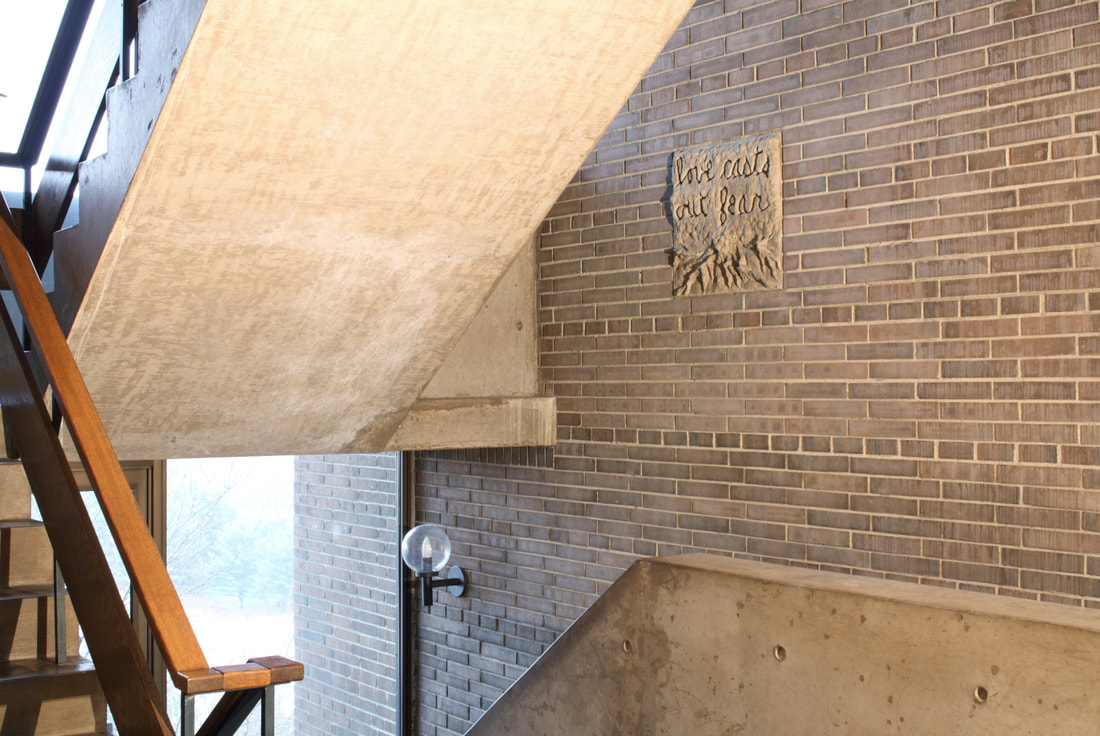Roman Verostko, American, Born 1929, BROTHER, 1966–1967, Cast concrete, 96 x 96 x 12 in., Saint Vincent Archabbey Collection. Photo: Richard Stoner.
|
Saint Vincent campus immediately following the fire of 1963. Photo (above): Saint Vincent Archabbey Archives. In response to the fire, Saint Vincent’s new monastery was completed in 1967. Photo (left): Terry Deglau.
|
On January 28, 1963, Saint Vincent was devastated by a fire that destroyed most of the Preparatory School with its historic chapel, clock-tower, and a large portion of the monastery. As a result, Pittsburgh-based architect Tasso Katselas was selected to design a new, expanded monastic residence. Katselas called for a strategic placement of artwork to be embedded in the walls throughout the brutalist complex.
|
Saint Vincent’s monastery features a load-bearing wall concrete relief entitled BROTHER and 32 smaller castings created by Verostko between 1966 and early 1967. In varying sizes, these castings featuring scriptural phrases accompanied by expressionist marks are embedded in walls throughout the complex. Texts for the castings emerged from the preferences of the monks at Saint Vincent in 1966. Fr. Leopold Krul, O.S.B., then prior of Saint Vincent, invited members of the community to submit biblical words and phrases they would like to have installed in the walls of the new monastery. The Prior’s selections, made in consultation with others, were sent to Verostko’s studio. There, with sheets of 8-inch Styrofoam he created molds by burning these texts and designs into the foam with hot irons.
|
Roman Verostko, I Am the Light, 1967, Cast concrete, Saint Vincent Archabbey Collection. Photo: Richard Stoner.
|
When Pere Frédéric (Jean-Marie) Debuysti* visited Saint Vincent in 1967 he was impressed by the integration of Verostko’s work into the monastery walls; publishing a feature on the castings in Art d’Église the following year. The article includes the artist’s notes on the rationale for these castings:
|
The growth of the individual monk relates importantly to his ability, in his daily work, to become a living embodiment of the personal maturity and freedom shown to us in the person of Jesus. In his life and work he shows us how “to be” in order to grow to fullness. A monastery, by achieving this life in its members, becomes the living witness of this life for others. Biblical words, as signs of how to be this way, have been cast into cement and embedded in the walls of the monastery as constant environmental reminders for those who live there. Thus, to be a monk is to “love one another“, ”be glad”, “sing”, “smile”; to know that “love casts out fear “ and to say “yes” to life, etc. The Saint Vincent new monastery building in the architectural excitement of its façade, its windows on nature and the city, its interior spaces, and its inscriptions form a celebration environment. It encourages those who live there to emerge more strongly with a biblical celebration of life as “God with his people.” +
Roman Verostko, Love Casts Out Fear, 1967, Cast concrete, Saint Vincent Archabbey Collection. Photo: Richard Stoner.
In creating the molds for these texts Verostko drew on procedures he developed for the expressive experience notations in his Paris notebooks. These castings remain a testimony to a time of radical cultural change that celebrated personal human experience. Formal conversation and dress codes were challenged as more familiar conversation and informal dress became commonplace. Verostko’s efforts to bring a modern face to Catholicism permeated his work at Saint Vincent after his return from Paris in the spring of 1963.
Roman Verostko, Love One Another, 1967, Cast concrete, Saint Vincent Archabbey Collection. Photo: Richard Stoner.
* Père Frédéric (Jean-Marie) Debuyst, (1922–2017), Abbey of Saint- André, well known for his work with the Ars Sacré movement following World War II. As editor of Arts d’Église, he helped elevate the importance of the human experience in spiritual life.
+ Debuyst, Frédéric. “Sculptures de Ciment: Monastère de Saint- Vincent.” Art d’Église 36, no. 142 (1968): 138–139.
+ Debuyst, Frédéric. “Sculptures de Ciment: Monastère de Saint- Vincent.” Art d’Église 36, no. 142 (1968): 138–139.





